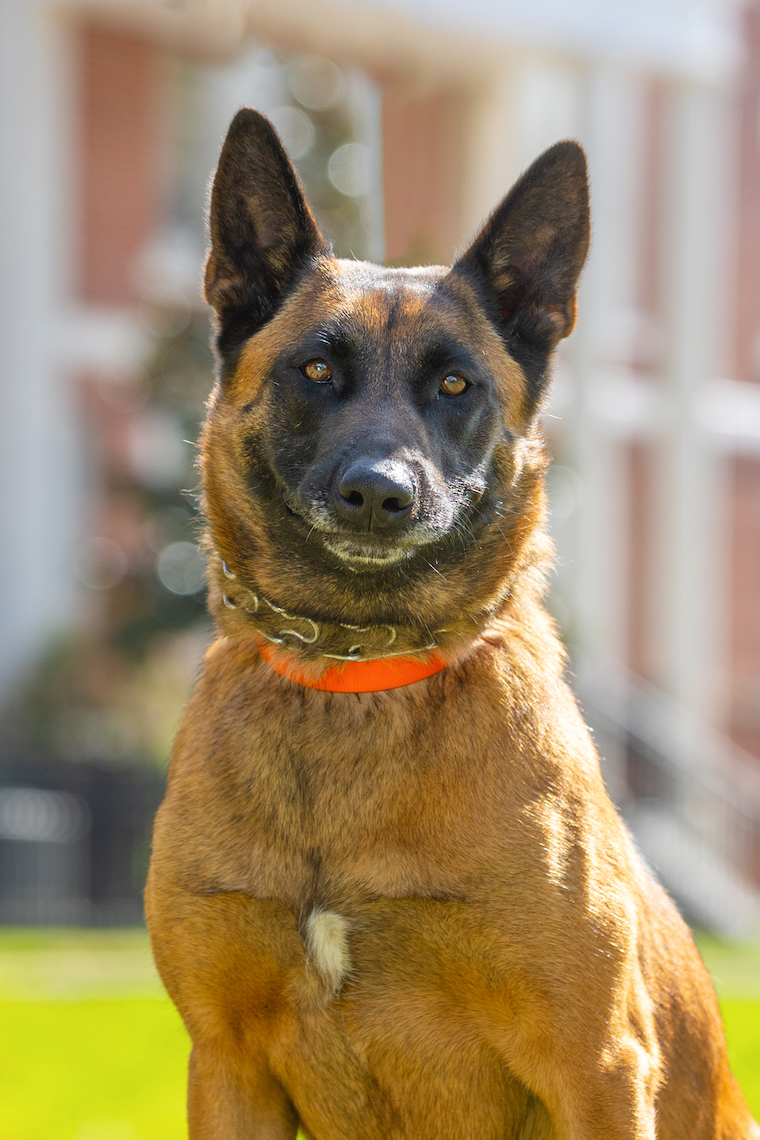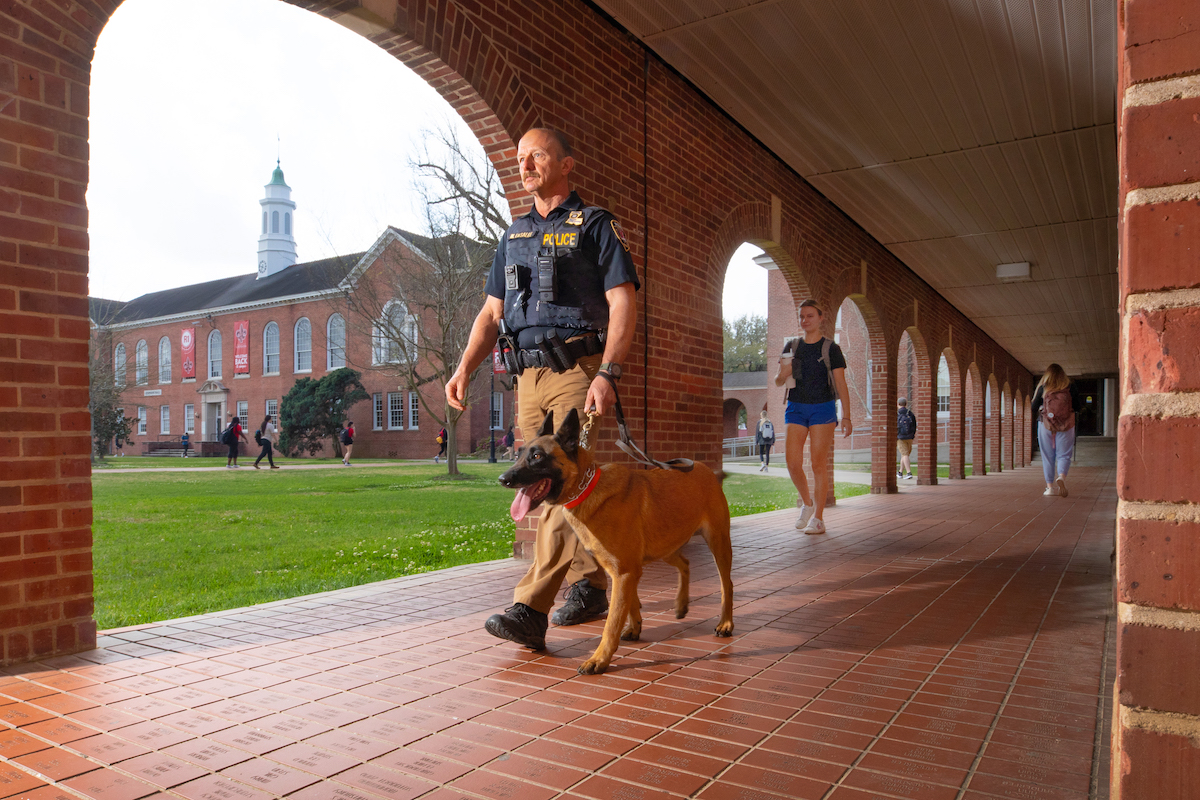University of Louisiana at Lafayette law enforcement “officer” Bella doesn’t make arrests, lead investigations, question suspects, drive a patrol car, issue traffic citations or write police reports. The 2-year-old Belgian Malinois’ expertise is explosives detection, a skill that begins with her specially trained nose for crime.
The K-9, who joined the UL Lafayette Police Department last year, is not a commissioned officer. Bella’s ability to identify materials used to build explosives, however, makes hers a responsibility as hefty as any in law enforcement. It’s a duty she shares with Lt. Mike LaSalle, her handler and trainer.
“We conduct searches every day, both random sweeps and suspicious package calls, including for book bags that have been left behind,” he explained. Beyond campus patrols – among vehicles, in hallways or at sports events – Bella and LaSalle are at times called upon to assist other agencies or to sweep K-12 schools. The work “is a necessary function, unfortunately, of the world we live in,” he said.
The pair’s partnership doesn’t end with the close of a shift. Bella lives with LaSalle, who is responsible for her care around the clock. “It just becomes part of your lifestyle,” said LaSalle, who isn’t complaining.
“She’s a sweet girl,” he added, an affectionate pooch given to face licks. Bella’s all business on the job, though. During patrols, like most dogs, she will sniff at almost anything. Unlike most dogs, when Bella noses around, it’s with an intent not easily diverted. That ham sandwich in a book bag? A curiosity. The live possum she roused among a bank of sound equipment at Festival International? Nothing to get wound up about. “She’ll show interest, but she won’t alert,” LaSalle said.
That’s because Bella has been programmed, in effect, to dissect smells that her brain either dismisses or translates into an internal command she promptly obeys. When Bella detects an explosives material, she will sit, an action called a final response. It alerts LaSalle that Bella’s olfactory-driven investigatory findings merit further examination. Or, when Bella doesn’t alert, enables him to immediately “eliminate the possibility of a threat or potential risk.”

Bella’s education in explosives detection began as a puppy. She was imported to the U.S. by Police Dogs Centre Holland B.V., a company in the Netherlands that trains and sells police dogs. Bella came to ULPD last year via U.S. K-9, a training and importation company in Kaplan, La. She has been exposed to thousands of smells and potential scenarios; it’s training sharpened daily by LaSalle, who receives yearly certification to handle and train her. Bella’s explosives detection proficiency, he said, rests on a common dog-training technique – tapping into her innate hunting instincts. As a Labrador retriever might be trained to find ducks, she’s been taught her only meaningful quarry is explosives materials.
The basic tenets of Bella’s training are odor association and positive reinforcement, built around her constant drive to find prey. Bella’s “prey” is something she considers a toy, a short length of irresistibly fetchable plastic pipe. Bella associates her “toy” with the odor of materials that would emanate from an explosive device thanks to exhaustive, nuanced and repetitive training. It’s a system that, at its core, simply conditions Bella to believe she’s immersed in a never-ending “and lively game to find her toy,” LaSalle explained. He will allow Bella to watch him “hide” a piece of pipe with a material that contains a specific odor. Once she retrieves the pipe, it creates an odor association. Bella’s reward, along with praise, is simply finding and having her toy.
“So, she’s really just always looking for it; she’s always on. It’s like a kid riding their bicycle through a neighborhood who smells chocolate chip cookies. They know if they find which house it’s coming from, they’re going to get a cookie,” LaSalle said.
Photo credit: Doug Dugas / University of Louisiana at Lafayette
This article first appeared in the Spring 2023 issue of La Louisiane, The Magazine of the University of Louisiana at Lafayette.
